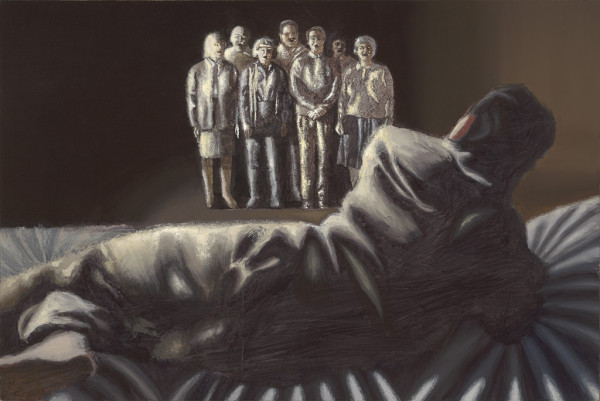This image can be read on two levels. On a realist level, a church choir visits a patient who reaches across his hospital bed toward them. On a more fantastic level, a patient, nearing death or at a pivotal moment of recovery, sees a vision of a heavenly or ghostly choir. It is a dream of a future encounter or an hallucination that conjures ghosts from the past. Critic Lois Parkinson Zamora argues that ghosts are one of the central motifs of Magical Realist literature: “Some literary ghosts serve their creators as carriers of transcendental truths, as visible or audible signs of Spirit. Other ghosts carry the burden of tradition and collective memory: ancestral apparitions often serve as correctives to the insularities of individuality, as links to lost families and communities, or as reminders of communal crimes, crises, cruelties. They may suggest displacement and alienation or, alternatively, reunion and communion. Still other ghosts are agents of aesthetic effect—el escalofrío, le frisson, the fantastical release/ relief from the constraints of reason.” (Magical Realism, p. 497)
Robert made several studies showing a supernatural agent (an angel, a vulture, Terry Fox, Saint George) hovering over or near a patient’s bed. Theses ghost-like agents reflect the hopes and fears of the patient. In Vision, the agent is a choir. In his book Illness and Healing, Robert states that the image depicts a moment of awakening, a new consciousness on the part of the patient of his need for community. In the image, the patient twists and half-rises out of bed in a sudden vigorous motion, his attention riveted on the strangely distant singers. The dramatic awakening effect and accompanying vision could be read as a miracle that demonstrates the healing power of music and by extension the healing power of art. Illness and suffering lead to revelation and insight.
